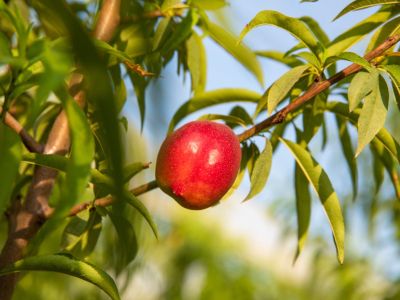Where Do Nectarines Grow?
If you live in USDA Hardiness Zones 6 to 8 and have a place for a small orchard, or even a single tree, you might consider growing nectarine fruit trees. With the proper care of nectarine trees, they can grow successfully in other areas. Care of nectarine trees in more southern areas includes diligent watering during hot seasons. Like peaches, new varieties of nectarines are self-fruitful, so you can grow a single tree and have fruit production without a pollinator. Your local county extension office can answer where do nectarines grow in your area and when the steps for care should be performed.
Seasonal Nectarine Tree Care
For any successful fruit crop, a good deal of planning and maintenance is necessary. This is true for care of nectarine trees. Nectarine tree care requires certain steps in each season for the optimum crop. Care of nectarine trees in spring includes several applications of fungicide spray to prevent brown rot. One to three applications are standard as a part of nectarine tree care, but in rainy areas or seasons, more applications may be necessary. Nectarine tree care in late spring or summer includes applications of nitrogen fertilizer. You can use urea, rotted manure, or chemical fertilizer and water in well. Young trees need half as much fertilization as older, mature trees. When growing nectarine trees, practice will familiarize you with which applications work best in your nectarine orchard. Another summer chore, like that with peaches, is thinning fruits from growing nectarine fruit trees. Thin marble sized nectarines to 6 inches (15 cm.) apart for larger nectarines and less breakage of limbs from the weight of growing fruits. Limbs should also be thinned during winter dormancy. This helps control breakage and encourages more fruit production. Another essential element of pruning is leaving only a single trunk on growing nectarine fruit trees. Keep the area beneath the tree weed free within a 3 foot (1 m.) span. Apply organic mulch 3 to 4 inches (8-10 cm.) deep; don’t put mulch up against the trunk. Remove leaves from the ground after they’ve fallen in autumn to avoid disease. A copper spray will be needed in fall to prevent shot hole fungus. Learning how to grow nectarines is a worthwhile gardening chore. Fresh fruit from your abundant harvest that is not used immediately can be canned or frozen.
